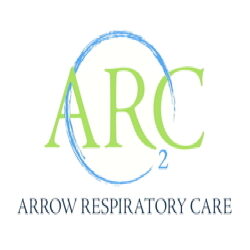Here are some tips to help you adjust to using CPAP therapy. As always, if you have question, please call our office.
Tip #1: Adjust your humidifier levels seasonally
- You’ll need more moisture during the winter months, so move your humidity levels up (1/2-1 level at a time until you’re satisfied).
- During the summer months, when air is warmer and more humid, you can turn down your humidifier levels.
Tip #2: Keep your CPAP at or slightly beneath height of your head
Condensation may run down into your hose if it’s above your head and you risk having your machine fall on you.
Tip #3: Make sure your CPAP machine is placed on a hard flat surface, such as a book, stool, or tray
Tip #4: If your machine is on the floor, you’ll probably need to wipe off excess condensation more often
Because air is generally cooler closer to the floor you may need to dust your equipment more often due to condensation build-up. You’ll also want to dust your machine more often and make sure that it’s “bug-free.”
Tip #5: Always use distilled water in your machine.
Tap water generally contains fluoride and other germ killers that may be harmful to your lungs.
Tip #6: In order to avoid discomfort or pain, we recommend mask liners.
They help eliminate annoying micro-leaks that can result in facial irritations. (Also, please notify your physician or our equipment professionals if your mask is causing you any discomfort or pain).
Tip #7: Try using zinc oxide ointment …
… for soothing minor skin irritations.
Tip #8: We advise our patients to have their CPAP machine checked at least every six months.
Even though many manufacturers recommend that you have your machine tested once a year, we find that our patients do better when their machines are tested more often.
Tip #9: In order to get used to your mask …
… put it on for 20-minute periods (not attached to the machine) while relaxing, watching TV, etc.
Tip #10: Once you’ve adjusted to your CPAP machine …
… use it consistently – every time you sleep – including for naps.
Tip #11: If you experience difficulties tolerating forced air …
… try using your machine’s “ramp” feature. This will allow you to gradually increase air pressure over time. If this doesn’t work, consult your physician.
Tip #12: If you regularly suffer with a dry or stuffy nose …
… you should consider a CPAP device with a heated humidifier, which can be adjusted. Your doctor may also prescribe a nasal steroid spray for you or you can swab your nasal passages with K-Y Jelly. You may also use a nasal wash, such as Neri-Med. Never, however, use petroleum jelly based products.
Tip #13: If you feel claustrophobic…
…practice by holding the mask up to your face without any of the other parts. Once you’re comfortable with that, try wearing the mask with the straps. Hold the mask and hose (without the straps) with the hose attached to the CPAP machine at a low pressure setting (turn the ramp feature on). Wear the mask with the straps and with the air pressure machine turned on while awake. After you’re comfortable with that, try sleeping with it on.
Tip #14: Although it is normal and usually temporary, some of our patients have trouble falling asleep when they begin treatment. If this is your situation, consider …
- Using your machine’s “ramp” feature to gradually increase air pressure over time.
- Avoiding caffeine and alcohol before bedtime.
- Exercising regularly.
- Taking a warm bath before bedtime.
- Avoiding going to bed until you’re tired.
Tip #15: Spend a few minutes each day cleaning your equipment
For quick cleaning we suggest using a solution of 1-part vinegar to 2-parts water. (Vinegar is a natural sterilizer and is completely non-toxic.)The wipes and sprays make cleaning mask cushions easy and every few days you can wash your mask out more thoroughly using hot soapy water.
